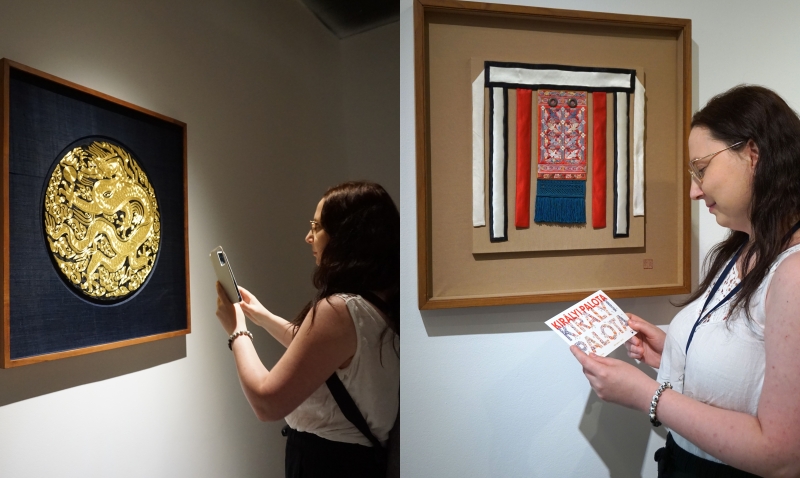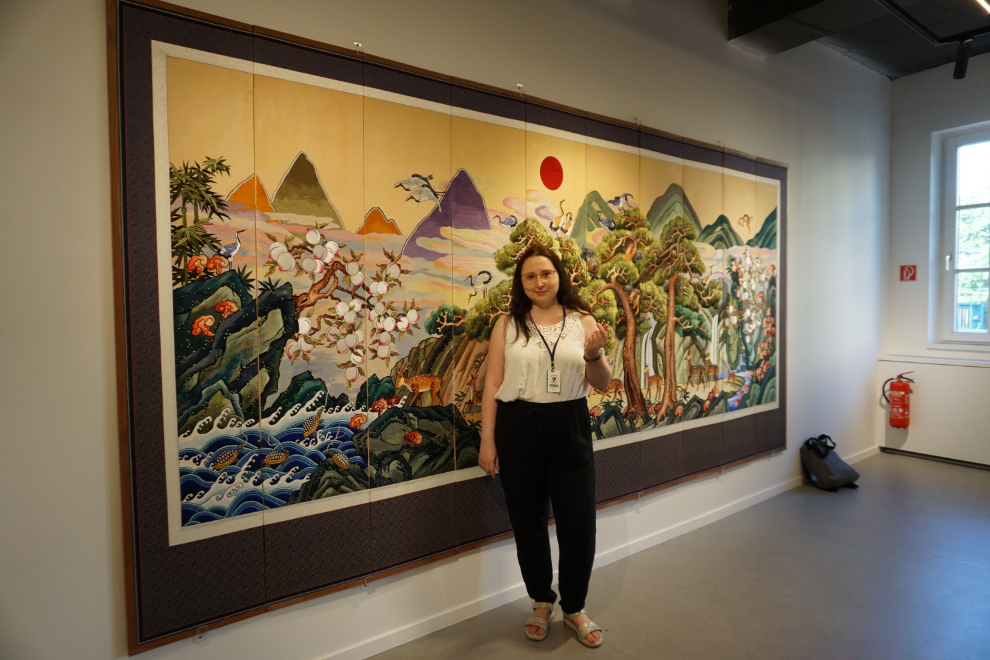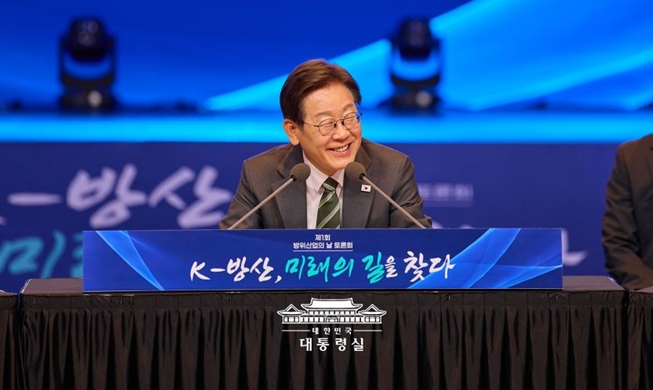- 한국어
- English
- 日本語
- 中文
- العربية
- Español
- Français
- Deutsch
- Pусский
- Tiếng Việt
- Indonesian
By Honorary Reporter Magdolna Magonyi from Hungary
Photos = Nora Maria Magonyi
The Korean Cultural Center (KCC) in Budapest, Hungary, on the evening of June 21 hosted a guided tour of the exhibition "Royal Palace," which featured contemporary Korean artist Lee Jung-sook's embroidery inspired by royal traditions. As a Korean culture enthusiast, I visited this exhibition, which ended on July 3, for the third year.
A large crowd waited to explore the KCC, with most heading to the first floor for the tour and trying on Hanbok (traditional clothing). Others joined artisan and calligraphy workshops on the second floor.
Hallyu (Korean Wave) has taken the Eastern European country by storm. KCC Director Yu Hye-Ryong was quoted in a Budapest Business Journal story in April last year, "Hungary has the largest number of groups and communities of fans of Korean culture in the world, more than 200."
The center in Budapest is also the largest KCC in Europe and second biggest worldwide.

Artist Lee Jung-sook’s embroidery is inspired by royal tradition from the Joseon Dynasty (1392-1910).
The tour focused on Lee's embroidery, a contemporary reinterpretation of that of the royal court of the Joseon Dynasty blending abstract forms with Korea's cultural traditions. I believe that she plays a remarkable role in defining contemporary art.
The first room on the tour featured a painting of Sipjangsaengdo, or the 10 traditional symbols of longevity: the sun, mountains, water, pine tree, turtle, deer, crane, herbs, clouds and fish. Its vivid green colors gave the piece rich detail and created an illusion of depth, making me feel connected to the piece.

This painting displays Sipjangsaengdo, or the 10 traditional symbols of longevity.
Next was bojagi (traditional wrapping cloth), which are uniquely crafted from a single piece of silk and decorated with flower and animal motifs that symbolize wealth. Korean tradition holds that the act of wrapping induces luck, protection and positive energy.
The third room featured a work that illustrates key moments from a nobleman's life, accompanied by drawings of animals such as tigers, turtles and cranes.
The last section showcased female attire for the royal wedding hung from the ceiling. Without barriers, visitors could see up close Joseon's tactile and delicate craftsmanship.

Female attire for Joseon royal wedding
Concluding the tour was a performance of traditional music and dance. I loved the delicate choreography, movement with striking elegance and seamless flow with the rhythm.
msjeon22@korea.kr
*This article is written by a Korea.net Honorary Reporter. Our group of Honorary Reporters are from all around the world, and they share with Korea.net their love and passion for all things Korean.
Most popular
- Grammy-winning producer calls Suga of BTS 'amazing artist'
- Reunited BLACKPINK releases video preview of world tour
- 'Universal love, family' themes fuel success of 'King of Kings': director
- New York Times picks 'Parasite' as top movie of 21st century
- 'Deep rest, strong scent': forest boosts health, region's economy
